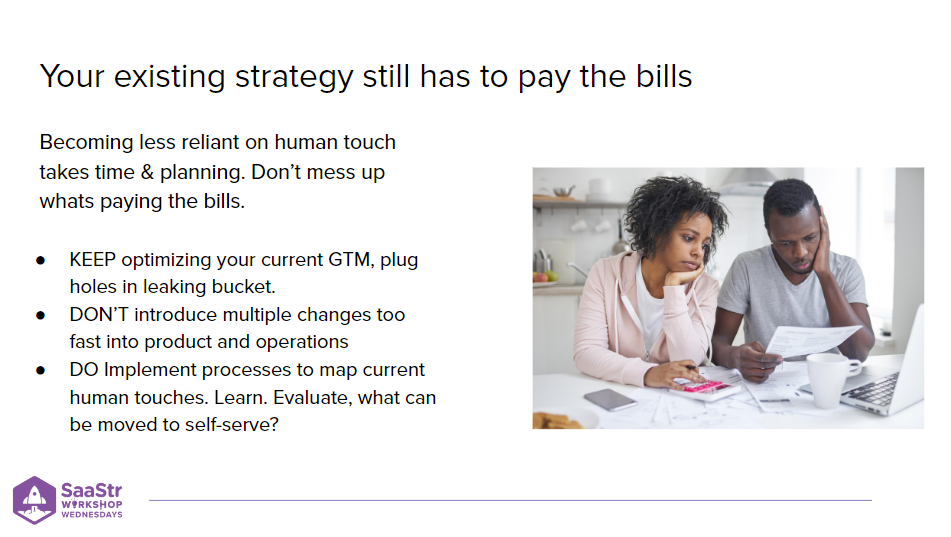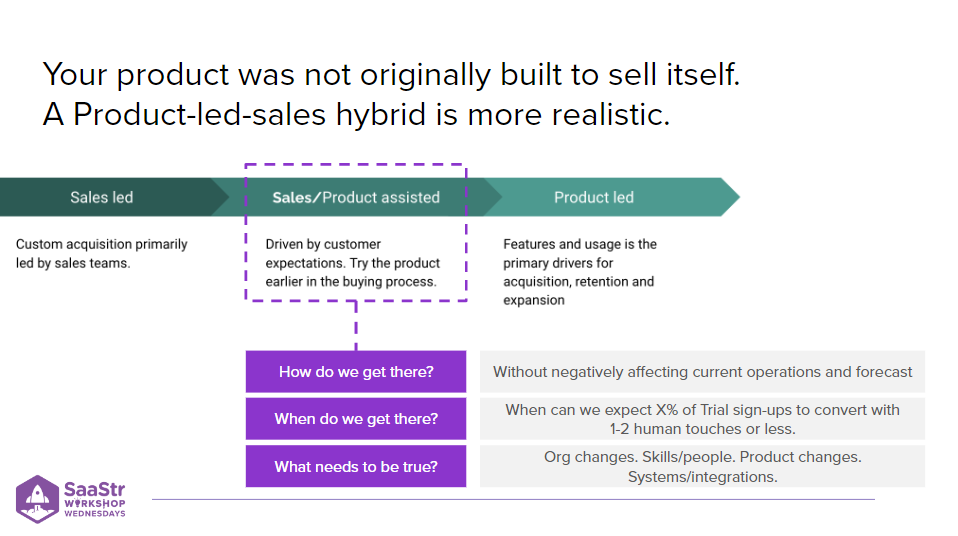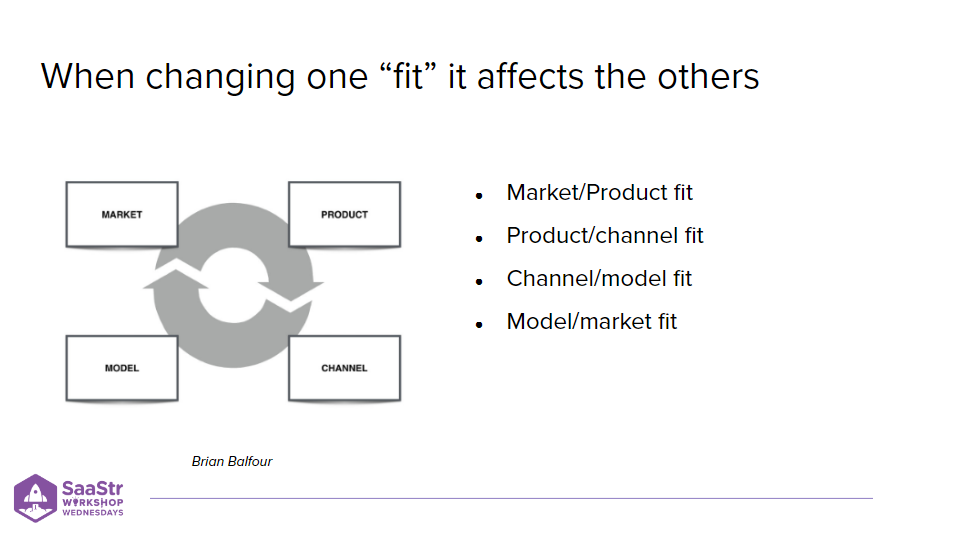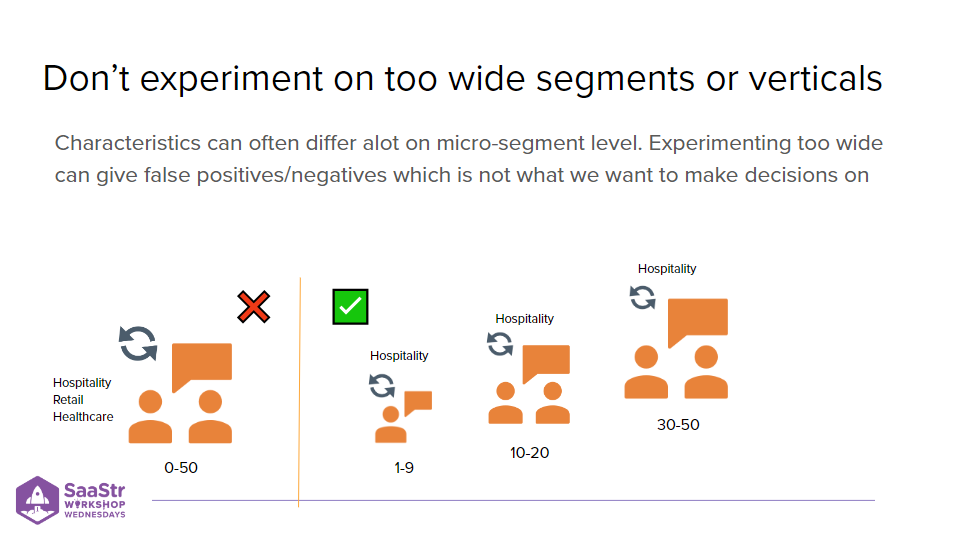So you’ve heard that product-led growth is all the rage, and now you want to transition from a sales-led motion to a product-led one. Some of the benefits of PLG are:
- The ability to grow faster
- A more accessible product for potential customers
- Greater communication and closeness with customers
At this week’s Workshop Wednesday — held every Wednesday at 10 a.m. PST for those of you who want to connect with SaaS experts — Growth Advisor at FastSpring and Director of Growth at Planday, Frederic “Fred” Linfjard shares his insights on how to evolve from a sales-led to product-led GTM strategy constructively.
Linfjard’s role is to look at the big picture for how to scale and grow businesses based on opportunities and goals that lie ahead. He creates a culture of experimentation versus only looking at historical data and forecasting.
“Some companies go really hard,” he shares. “But you have to take a step back because you might underestimate what it means to implement product-led growth. If you rush it too fast, you can risk destructive consequences in the organization.”
So how do you go toward PLG after you’ve already scaled the company through an SLG motion? Let’s look at Linfjard’s five lessons learned.
Lesson One: You Still Have To Pay The Bills

Implementing PLG tactics is healthy in any type of business, even enterprise. But you shouldn’t stop doing what works. You still have to pay the bills.
Becoming less reliant on human touch takes time and planning, so take a good look in the mirror, determine how much and how fast you can do it, and then form a cross-functional plan that meets your current business goals while also working towards future ones.
How do you implement this new plan while also maintaining the current one?
- Keep optimizing your current GTM. You’ll have to pay for this new initiative anyway, so you don’t want to introduce a ton of changes too fast and hurt business. Shifting towards more PLG initiatives is supposed to help you!
- Do implement processes to map out current human touches. You can learn from and adopt these feedback loops to see where you can reduce the number of calls made and the length of time on those calls and move specific things to self-serve where it makes sense.
Lesson Two: You Are NOT Going To Be Fully PLG Anytime Soon, If Ever

Depending on the product you have, it’s likely that you’ll never be fully product-led, and that’s ok. True PLG companies are born that way. If you’re not born as a PLG company, you’ll likely benefit from combining PLG and SLG to be more efficient and effective.
A hybrid product-led sales motion is more realistic if your product was not originally built to sell itself.
A sales/product-assisted hybrid is often driven by customer expectations vs. the features and usage drives in a true product-led business.
So when you’re looking to evolve into a hybrid, you can let customers try the product earlier in the buying process. Some questions you can ask yourself are:
- How do we get where we want to be without negatively affecting the current operations and forecast?
- When can we expect X% of trial sign-ups to convert with 1-2 human touches or less?
- What needs to be true to become closer to PLG? Do we have the proper organizational structure, skills, people, systems, or integrations? Do we need to make any product changes?
Lesson Three: Create A Dedicated Team To Drive Change

You don’t want to take your sales-led people and shift them to this product-led experiment. It’ll take away from your inbound optimization and won’t be as efficient.
Instead, you should create a dedicated team to drive change in parallel with your existing sales-led Go-To-Market strategy.
A dedicated growth team is suited to this change. To create the best environment for this team, make sure they:
- Report to the CEO or similar vs. siloing them into a marketing or sales team. This gives them the autonomy to be as cross-functional and experimental as possible.
- Work in parallel to the existing organization and sales motion to exchange human touches slowly with PLG tactics.
- Can ideate, experiment, and bring in new resources as needed.
Lesson Four: Understand and Plan Your Product Market Fit



You have four types of fits: product, channel, model, and market. You need to understand and plan beyond your product market fit because if you change anything within those four types of fits, they’ll impact the others.
Imagine it like a web, each one interconnected. You tug on one strand; you tug on them all.
When looking at your product-market fit, look at the whole motion rather than just the product. You can move parts around, like adding a trial at a premium. Learn how each action impacts your entire motion. Then you can continue to create the most efficient, optimized motion possible.
Lesson Five: Start Small and Expand As You Learn


Now’s not the time to go big or go home. It can be destructive if you create broad or massive shifts without understanding the impact.
Instead, start small and expand your scope as you experiment, learn, and implement changes.
When you experiment too widely, you can get false positives or negatives, which aren’t so great when making business-altering decisions based on those results.
Key Takeaways
- Assess your PLG maturity level across the organization and product.
- Don’t stop what you’re doing now (you still have to pay the bills), and don’t use the same resources to drive PLG changes.
- Don’t aim to become fully PLG ever. Instead, implement PLG tactics and layers to create a product-led sales hybrid.
- A high level of speed and experimentation is needed with PLG. Implement a dedicated team with a strong growth profile to drive this change cross-functionally and in parallel with your existing GTM motion.
Every Wednesday at 10 a.m. PST, SaaStr will hold live, interactive workshops on Zoom where experts in the community share their insights. Sign up HERE!

